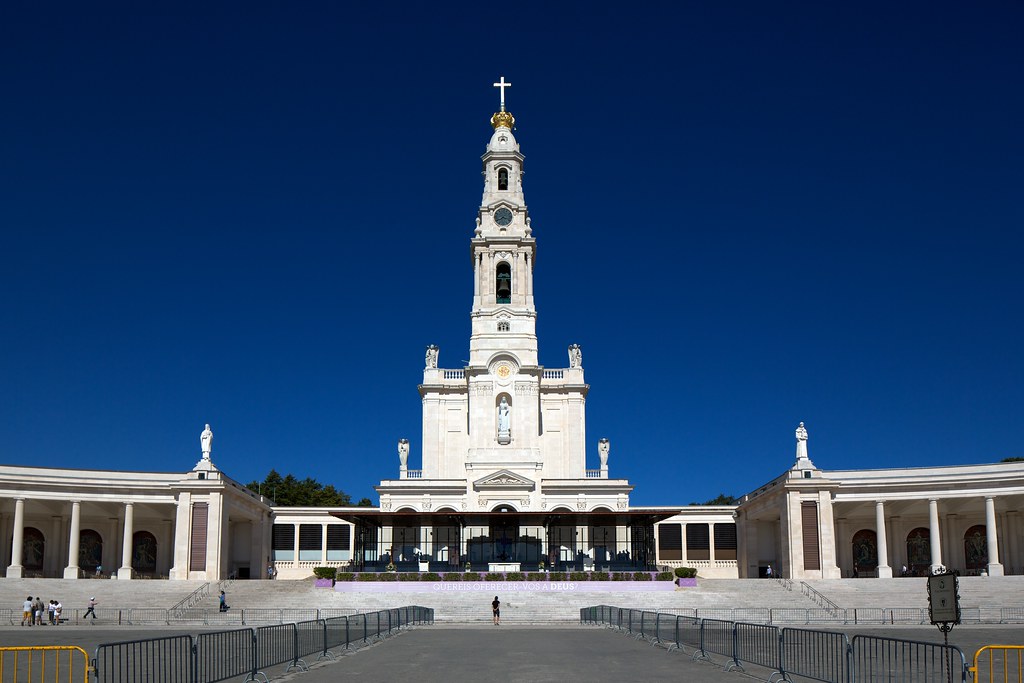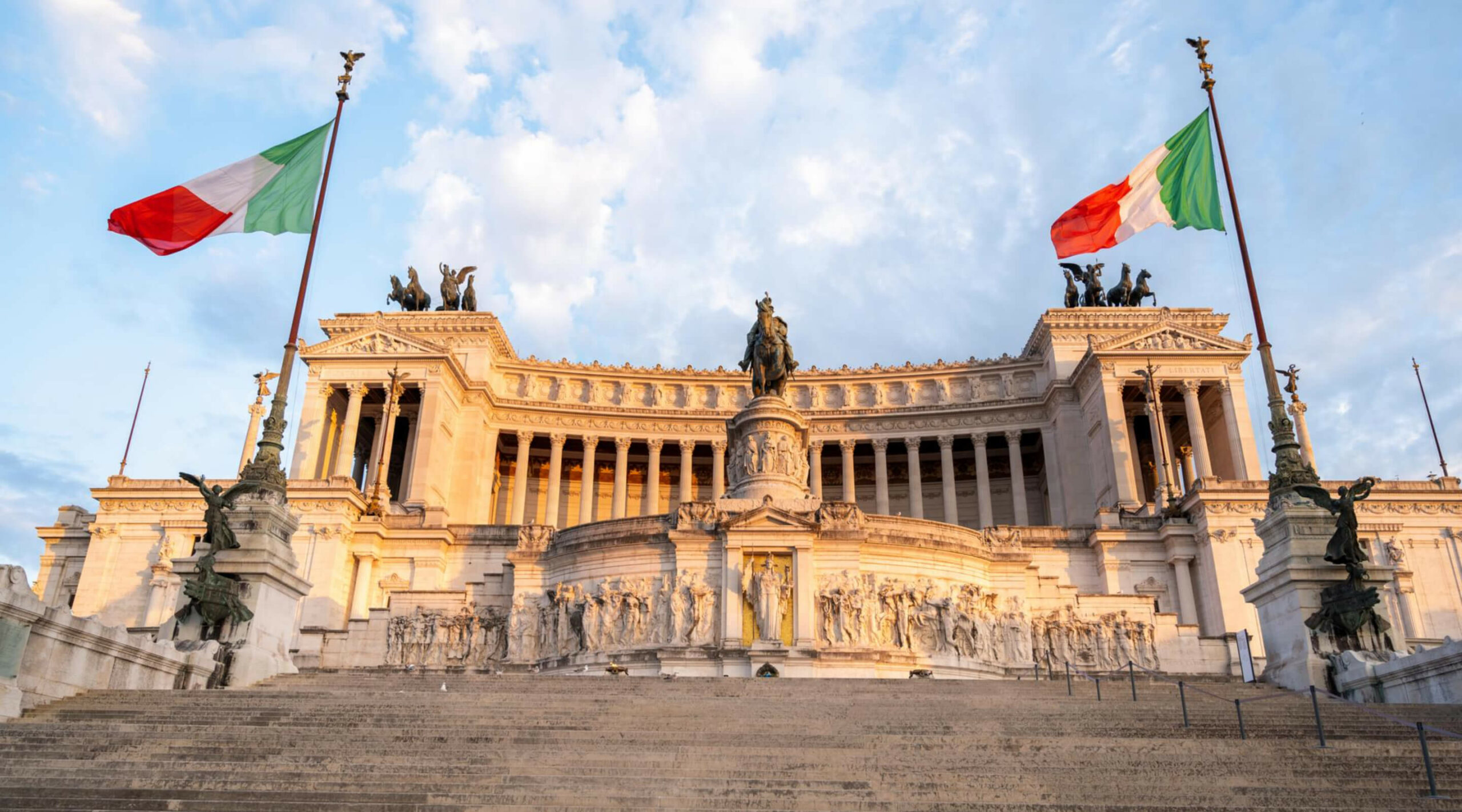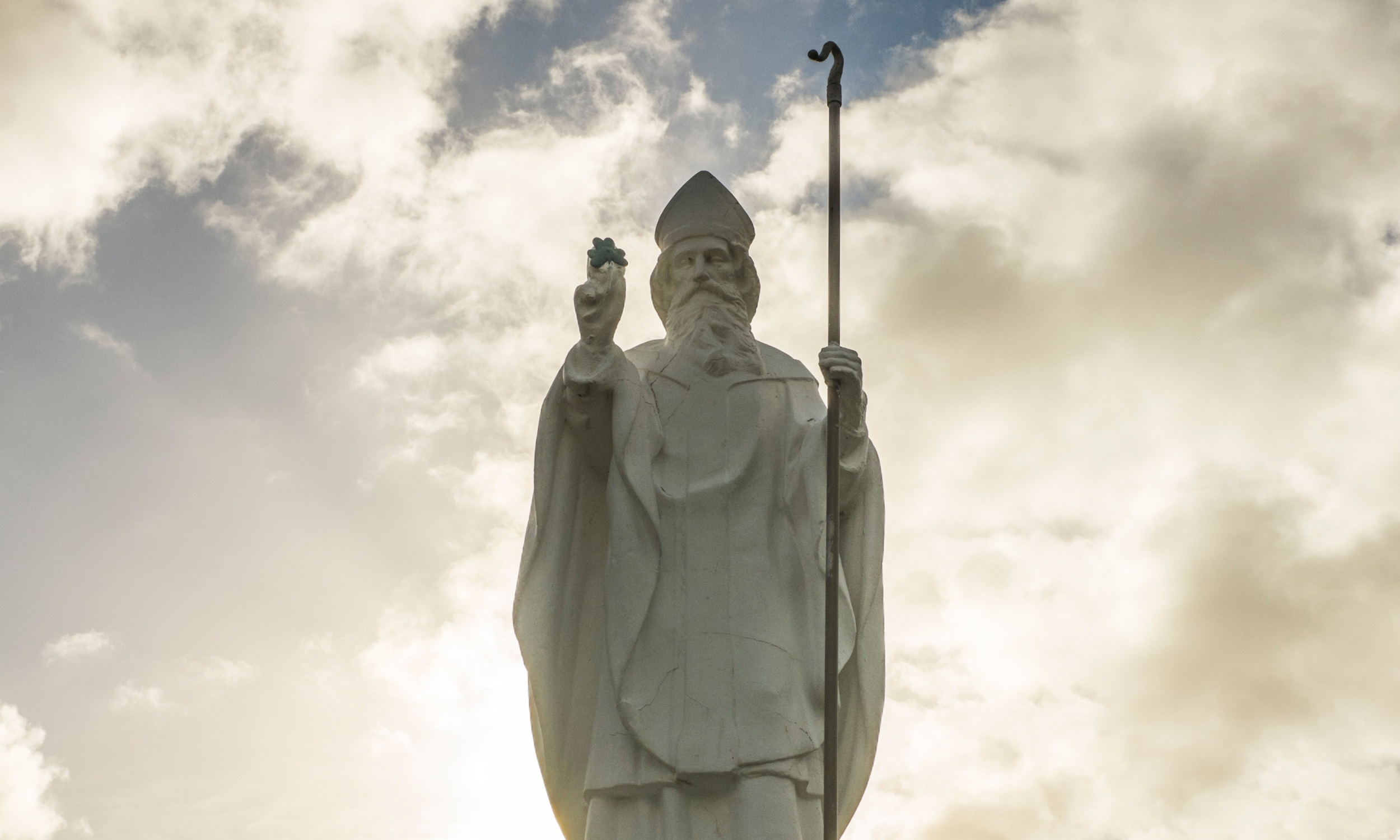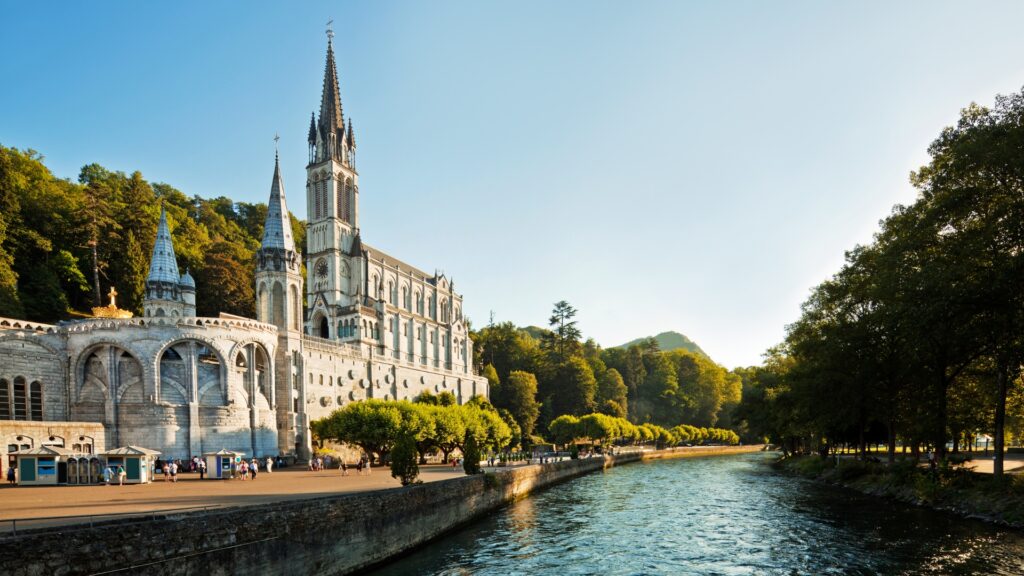1. The Vatican
Vatican City is the smallest country in the world. This 110-acre independent state located in the heart of Rome is home to the Pope and the headquarters for the Universal Church. Inside Vatican City you will find St. Peter’s Basilica, the Vatican Museums, the Vatican Gardens, and St. Peter’s Square. St. Peter’s Basilica is the largest church in the world, covering 5.7 acres of land and runs the length of two football fields.
The story of the Basilica stretches back almost 2,000 years to the ministry of St. Peter. This follower of Jesus brought the message of Christianity all the way from modern day Israel to the heart of the Roman empire. After Emperor Nero burned Rome, he blamed the Christians and began rounding them up. St. Peter was crucified by Nero at a Roman horse race within the city. Peter’s followers took his body and buried it in a crude grave nearby.
Word spread of the Apostle’s burial site and many Christians sought to be buried near Peter. The site’s enduring significance inspired Pope Julius II to build the modern-day church in 1506. Construction would last well over 100 years and included legendary artists and architects like Michelangelo, Raphael, and Bernini.
The Dome of St. Peter’s Basilica was Michelangelo’s final work. It was the first dome to be elevated by windows, giving it a floating effect. The famous architect took no money for the project, finishing this opus only for the “glory of God”.
WHAT TO LOOK FOR
The Pieta
This beautiful marble statue of the Madonna holding a crucified Jesus is the most famous renaissance sculpture. Amazingly, Michelangelo was only 24 years old when he completed this masterpiece (doesn’t this make you feel accomplished?). You can see the Pieta just to the right of the Basilica’s entrance.
The Holy Lance
Just off the main altar, you will find a statute of a Roman soldier holding a spear. This is the statue of St. Longinus, the Roman legionnaire that stabbed Jesus’ side at the crucifixion. Concealed in the base of the statue is the spearhead that pierced Christ’s side. Many tyrants and monarchs throughout history have tried to obtain the spear with the belief that whoever wields it will be unstoppable.
The Chair of Peter
The elevated bronze encrusted chair directly behind the main altar is the actual chair used by Peter as bishop of Rome. This simple wooden chair was encased in the beautiful artwork you see today by Gian Lorenzo Bernini.

2. St. Paul Outside the Walls
The Basilica of St. Paul Outside the Walls is notably removed from the city center. This is because Paul was a Roman citizen who enjoyed the “generous” legal privilege of beheading. Convicted Roman citizens were typically not crucified but rather brought outside of Rome and quickly decapitated. After Paul was martyred in 68 AD, a rich Christian follower donated a plot of land nearby to serve as his burial ground.
Soon after, early Christians erected shrines over his resting place. In the 300’s, the Emperor Constantine erected the first Basilica over this spot.
In 1823, a worker accidentally burned down the original church (which was over 1,400 years old at the time!). Shortly after, the Pope put out a call to the whole world for donations to rebuild the church. Just as Paul brought the Gospel message all over the world, donations poured in from every corner of the globe. From Russia to Egypt, monarchs sent in material from their native country to build the beautiful Basilica that you see today.
WHAT TO LOOK FOR
Running the length of church are mosaics of every Pope from Peter to Francis. Legend has it that the Pope to fill the last spot will be the final Pope before the end of time. There are only 6 spots left, so hurry up and see Rome soon!

3. The Pantheon
Walking into the Pantheon is like stepping back into ancient Rome. This old temple to “all of the gods”, was built by the emperor Hadrian in 126 AD. The temple was a monument to Rome’s power and technology.
Ancient Roman architects used cutting edge technology to build the largest dome of the ancient world. First, they built a wooden frame and then carefully poured concrete rings around it. To complete the top, they used a light basalt concrete mix to ensure stability. The massive columns outside the Pantheon were not from Italy, but rather shipped from Egypt, showing the size and power of the Roman Empire.
In the middle ages, the pagan temple was converted into a Christian Church. Instead of serving as a temple to all the gods, it became the church of Mary and All of the Martyrs.
WHAT TO LOOK FOR
Tilted floors and hidden drains: Since the Oculus is an open-air hole in the middle of the building, the Romans had to ensure that their temple never flooded. If you look closely, you can actually see that the whole floor is slightly slanted, with the highest point in the middle of the room. Additionally, if you search for them, you can find tiny draining holes in many of the tiles.

4. The Trevi Fountain
When you enter the square and see the Trevi fountain for the first time, you’re blown away by its size and sound. This beautiful fountain stands 85 feet high and runs 65 feet in length. The loud torrents of water gushing from Neptune’s chariot make you feel like you’re on the high seas.
The fountain traces its origins back to the reign of Marcus Agrippa in 19 BC. Marcus wanted to build a system of complex aqueducts supplying the Roman baths with hot water. As he and his soldiers were scouting out a water source, a young maiden showed the emperor a natural well nearby. In her honor, Marcus named the new aqueduct, Aqua Virgo.
In the 1400’s, Pope Nicholas 5th wanted to reconstruct the dilapidated aqueduct. At the termination of the water’s path, he commissioned this beautiful fountain.
The scene depicted is the Roman god of the sea, Neptune, taming the waters. He is seen here in a clam chariot being pulled by two mythical sea horses. One horse is docile the other is wild. This is meant to represent the unpredictability of the sea.
WHAT TO LOOK FOR
Coins
If you throw a coin in the Trevi fountain, it means you will return to Rome one day (if you don’t want to come back, don’t throw a coin!).
Frieze
Above the fountain there are two reliefs. These two pieces tell the story of Marcus Agrippa meeting the young maiden who shows him the well.
Swimming
You may occasionally see some tourists getting into the fountain. This is a bad idea! The fine for taking a plunge Trevi Fountain is now up to 500 Euro’s per person (that’s a whole lotta pasta!).

5. Castel Sant’Angelo
This massive brown fortress is an unmistakable part of the Roman skyline. The Castle of the Holy Angel has served as a mausoleum, a fortress, a papal palace, a prison and now a museum. In 130 AD, the emperor Hadrian constructed this building as a final resting place for himself and his family. After Hadrian’s death, Rome was embroiled in a number of wars, forcing the military to convert the tomb into a fortress. In the 1500s, Popes used the castle as a safe haven since the Vatican lay outside of the city’s walls. The Catholic Church constructed a 2,000-foot-long elevated escape route that ran from Vatican City to the Castle so the Pope could escape in case of invasion (it was used twice!).
After the construction of St. Peter’s Basilica, the Popes moved back to the Vatican and the castle became a prison, housing the most dangerous criminals in the papal states. In 1901, the castle was finally transformed into a museum, preserving its nearly 2,000-year-old history.
WHAT TO LOOK FOR
The angel on the top: You can’t have a Castel Sant’Angelo without an angel! The giant angle on the top of the fort is St. Michael. Legend has it that in 590 AD, St. Michael appeared in this exact spot to announce the end of the great plague.
Want to see these sights for yourself? Discover more here.







